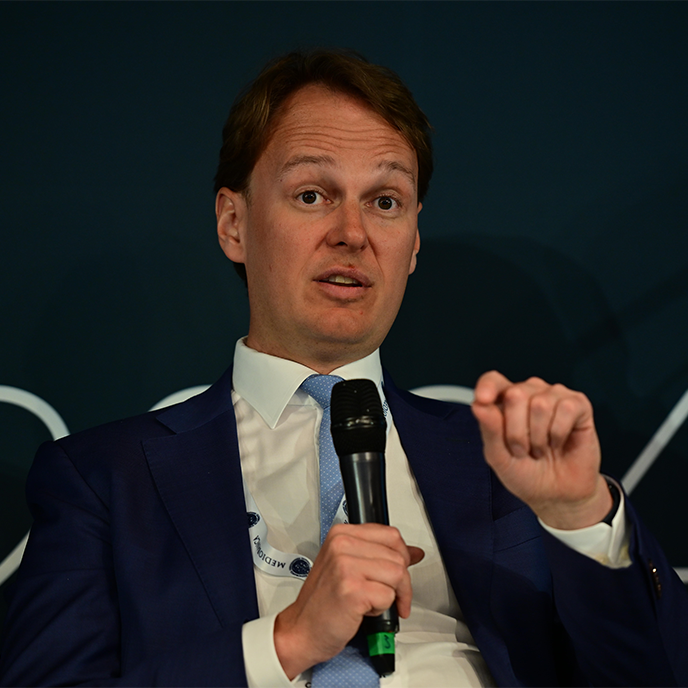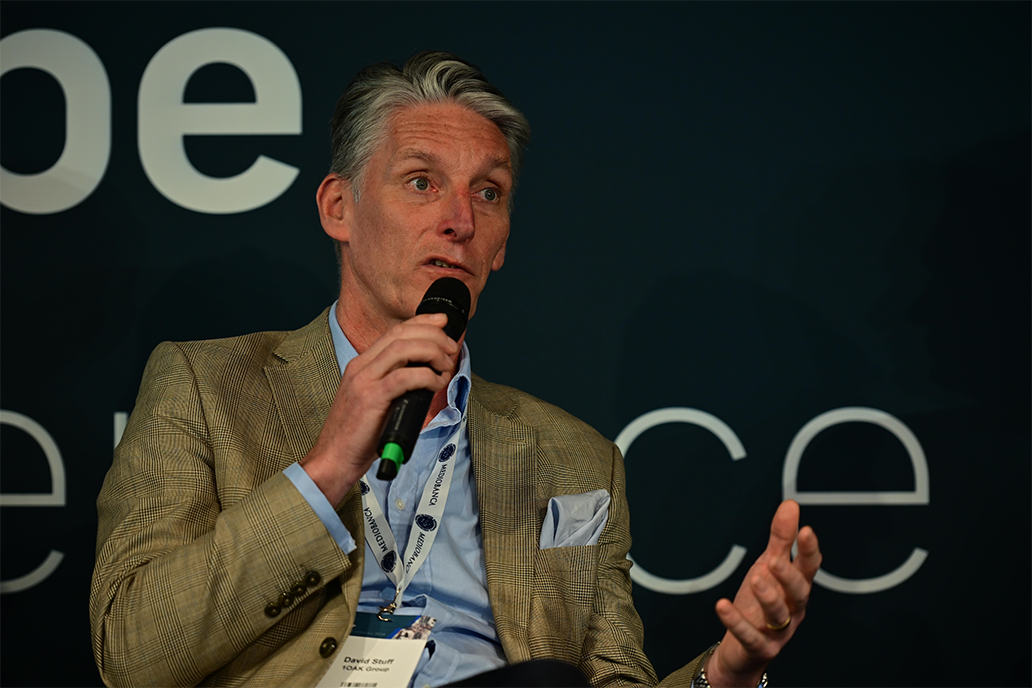A panel comprising several industry experts and providers of retirement investments discussed the role of structured products to serve this part of the market at the SRP Europe 2024 Conference in London.
As governments grapple with how to fund state pensions when people are living far longer, the structured products industry faces its own challenges to serve this portion of the population with products that can meet the goals of investors saving for retirement.
With more than 700 million people - 9% of the global population - going into retirement over the next 10 years structured products could play a pivotal role in supporting retirement investors - Christian Probst, Munich Re
The challenge is basically finding an answer to the pressure we are facing in the market from retirement investors as state-funded pensions fail to deliver a sustainable income for retirees, said Christian Probst (pictured), head of capital market solutions structuring, Europe & North America, at Munich Re Markets.
"With more than 700 million people - 9% of the global population - going into retirement over the next 10 years structured products could play a pivotal role in supporting retirement investors," he said.
"The challenge comes from demographic changes globally since the late 90s, the limited choice in the defined contributions space and the interest rate environment which has added extra pressure to insurance companies."
According to Probst, the pension and retirement products business has gradually shifted over the last 20 years "to be more bank competitive".
"What was largely a regular premium, long dated business of the last 20 years has changed with 30- 35% of the activity now focused on single product business which looks much more like a bank product," he said.
That shift comes with several challenges together as people in search of yield have extended asset duration quite substantially on their general accounts.
"If we look at the asset side, before the new rates cycle there were around €150 to €200 billion of unrealised gains, but that picture has completely shifted the other way around and the industry in Germany is looking at a unrealised loss of around €150 billion at the moment - roughly 18% of the total reserves and unrealized losses," added Probst.
One of the more popular products here are buffered type structures - these are actually sort of short gamma which is a really bizarre concept for retirement investors - David Stuff, Socius Technologies
The higher interest rates environment has also created significant challenges and there is also much more awareness around credit risk among retirement investors - product providers that relied heavily on bank-based distribution such as single premium businesses have completely fallen off the cliff.
"That has created a big issue at the time where people need to replenish their general accounts and come up with new investment deals to make up for the unrealised losses," said Probst. "That business is falling away, and we see a strategic reorientation back almost to the old model of offering a different value proposition - long dated, regular premium business which can respond to the actual need of the investor."
Income, protection
According to David Stuff (below), director at Socius Technologies, the structured products industry can help investors but must be able to tailor the products to fit the profiles of investors that are getting close to retirement as well as retirees.
"One of the more popular products here are buffered type structures - these are actually sort of short gamma which is a really bizarre concept for retirement investors as they load up equity exposure when markets are going down," said Stuff.
"However, from a structured products perspective, we've also seen people using products that sell down and out puts such as yield enhancement or income generating product. I think from a payoff profile - put sell strategy – is a tactic that can be used by someone in retirement as you cannot just look at the income and don't worry about the capital value."
Stuff noted that the direct contribution (DC) market in the UK is offering relatively poor value for money to investors coming into retirement over the next few years as this is seen as a small pot that people use for unexpected life events.
"That utility needs to be increased and currently the options that people have are limited," said Stuff. "On the one side, you've got a provisional annuity, where you may have indeed the need of lifelong income served, but effectively you're investing in gilds for the next 40 years.
"Beyond that, the alternative is leaving all the risks with the investor. We need different levels in values that give a better balance between protection and income. The focus should be on providing lifelong income with capital market performance and flexibility to complement the state pension and corporate pension pots, that is really what people need."
Structured products also offer a good foundation to work with individualisation, guarantees and time constrains to offer products that match the needs of investors with different risk approaches, according to Steve Lamarque, partner at Hilbert Investment Solutions.
"The answer is about product creation and leveraging technology to come up with the right version for each client," he said.
On Hilbert's case, the company first selected a platform that could manage those single contracts one by one and deliver all the data about the products to each investor on a daily basis.
"Select the right technology was key for us to move into the retirement space, but you also need to be able to extract value from the market and leverage market trends which can be difficult sometimes," said Lamarque.
For insurance companies is slightly different, added Probst, as this kind of provider only has insurance and pension clients really first and foremost, and serves a completely different part of the client set compared to distributors of structured products.
"We've adapted our technology specifically to respond to our client needs," said Probst. "For us every single person or member or policyholder is a single line item, and we calculate Greeks from millions of policies on a day to day basis. We can be very targeted to the types of risk that we take and feed performance back into our clients."
From a pure risk management perspective is also a logical approach as "with death benefits you need to check that a person that can get death benefit hasn't died several times already".
CPPIs
The panel agreed that CPPIs had a moment in the sunshine, but new technology has delivered systems and algos that can be used to run products at an individual level.
"You suddenly realise the opportunity to look at the target date fund market which is a massive market with different investor profiles - some people will have lots of assets compared to others that don't have anywhere near enough," said Stuff. "It's through the use of technology and the use of structured products that you understand that accounts should be managed at an individual level."
Stuff does not look at CPPI structures as a product but as a way to deliver a particular payoff profile, and noted that there are lots of other ways of managing accounts to deliver results.
"The CPPI structure clearly ran into problems which have been rectified with the iCPPI approach. This is also a good example of using structured products techniques to deliver new strategies to meet the needs of investors and the best way of doing it," said Stuff.
The generational shift and immigration demographics has also created a vacuum for European insurance companies which see their natural client base dying away while it struggles to find appealing products for a younger generation with different needs and goals.
"For us the approach to serve investors – young and old - is quite similar as we focus on guaranteed income and protection. The key is to be able to offer alternatives for the accumulation and decumulation stages," said Lamarque. "Investors need to be able to access different products that fits their needs and targets at any given time as the risk appetite in the accumulation stage will be different to the decumulation stage."
Do you have a confidential story, tip or comment you’d like to share? Write to info@structuredretailproducts.com



